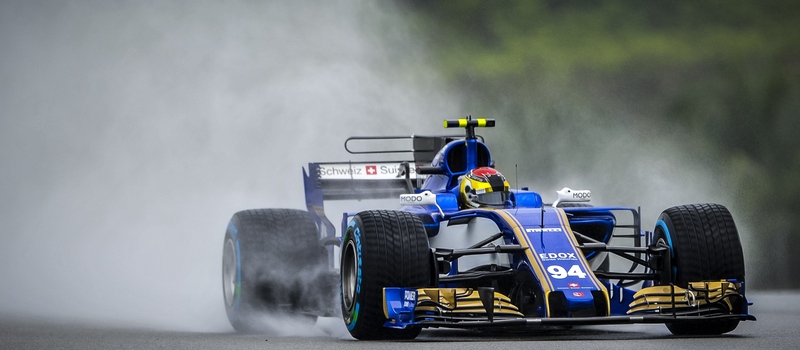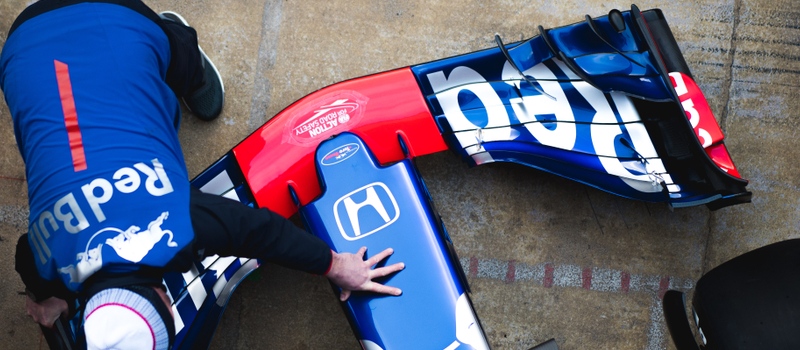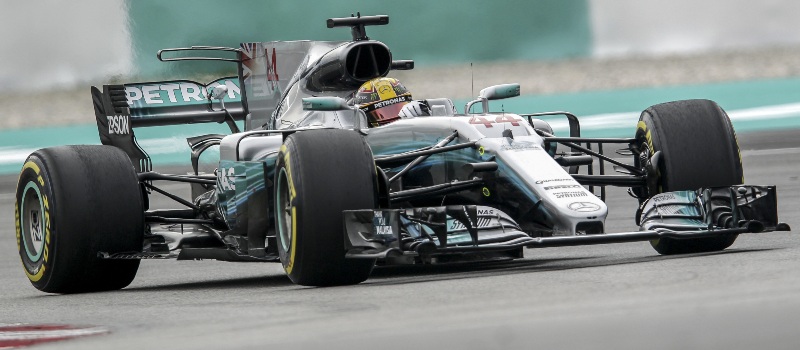
The 5 most underestimated challenges of being an F1 driver
10th Aug, 2020
In many ways, being an F1 driver probably seems like a dream job. In fact, for thousands of people it still is. Even if you don’t consider yourself a fan of the sport, you can’t deny there’s something magnetic about its appeal – from the poised, skeletal builds of the vehicles to the chest-shuddering scream of their engines. Imagine being in the heart of a machine like that.
But although it all seems very glamorous – and in many ways it definitely is – there are flipsides to being an F1 driver. And it’s not just the pre-race pressure, or the tightly-controlled PR interviews, or the ever-present threat of a crash. There are a couple of other often-underestimated challenges that come part and parcel of the lifestyle too. Stuff like…
It requires a very specific kind of fitness (and a strong neck)
F1 drivers regularly travel at speeds of around 200mph, and it’s not unfair to say that technically, the car’s doing quite a lot of the work. But that doesn’t mean that drivers don’t have to be physically fit. Indeed, their training regimens are exactly as strict as you’d find for almost any other athlete. They do use weights to some extent, but the bulk of their exercise is focused on swimming, cycling and running. Drivers also work with a nutritionist, and often eat up to five to six small meals a day, with lots of greens and protein.
So why do they have to be so disciplined? Well, in a word: physics. Drivers have to withstand between 3.5 Gs to even 5Gs of force when cornering – for reference, that’s between three to five times the strength of standard Earth gravity. If drivers aren’t fit enough to withstand those forces, they risk doing themselves some serious injury.
And that leads us nicely onto one particularly niche of the body they do place a lot of focus on – their necks. While generally, muscle isn’t a huge priority for drivers, they do spend a considerable amount of time during training lying horizontally with weights strapped to their head, building up their neck muscles.
The neck has to take a lot of strain during a race, in order to keep the head and helmet properly upright throughout all those tight turns. Even F1 rookies have been described as appearing to have “have borrowed their necks from a rhinoceros”. Veteran driver Fernando Alonso has been known to crack walnuts with his.
The personality and the ‘mood’ of the car
Some professional F1 drivers have been known to compare their cars to horses, in the sense that they seem to feel ‘alive’, even if the driver is the one still ultimately in control. This isn’t such a huge stretch – at Scrap Car Network we’ve already talked about how people tend to assign personalities to their everyday cars, so it’s probably not surprising to learn that professional drivers do the same for their own high-spec machines!
While F1 cars are built to a very exacting standard, there are still tonnes of little variables that can make them feel like they’ve got minds of their own. The rubber tyres can change with different temperatures, and the changing track conditions can affect the way they react to the driver’s control in minute but detectable ways, making them a little more jittery.
That’s the mark of the very best racing drivers – the ability to not only detect those changes, but also adapt their driving style to accommodate them, getting the very best out of the car.

Memorising the track
It’s not only their cars that drivers have to know inside out – they also have to have the track mentally laid out in their minds, every bend, straight and turn as razor-sharp as a photograph. As well as the layout, they’ll also have to know exactly how best to adapt to each section of the track, and the optimum moments to brake, accelerate, and begin their turns. This extends all the way down to needing to know exactly what gear they need to be in at any one time.
Rookie drivers are trained in this art using a simulator, consisting of a mock cockpit with a fully realistic wheel. The graphics aren’t amazing, but every inch of the tracks are created in faithful detail, allowing drivers to familiarise themselves intricately with every section long before they start their engines, working out their strategy.
But the simulator can’t recreate every aspect of the driving experience. It can’t reproduce the kind of G-forces that drivers will be subjected to out on the track, and it won’t be able to fully prepare them for the changeable driving conditions they’ll have to contend with from race to race. It also won’t prepare them for the heat – the cockpits can get so hot that drivers can drop as much as 3kg in bodyweight between the flags.

The jetsetting life isn’t all it’s cracked up to be
When you go to a foreign country, whether it’s on a holiday or a business trip, chances are that you take every opportunity you can to see the sights, sample the cuisine, soak up the local atmosphere. The careers of F1 drivers take them all across the world, so naturally you might envy them the globetrotting aspect of their career – but actually, they see less of each city than you might think. The intense pressure of the races, combined with the ever-watchful eye of the sponsors, means that drivers tend to spend relatively few of their days revelling in the culture and surroundings of each country. Instead, many of them follow a strict predetermined schedule, moving from the airport to the hotel, to the circuit, back to the hotel. Rinse and repeat a couple of times, before finally going home again. It’s a similar tale for the mechanics, and many other members of each F1 team.
That’s not to say that nobody gets any time to enjoy a bit of overseas culture, but it’s mostly not quite as glamorous as you might think. And that brings us on to perhaps one of the most difficult aspects of living an F1 lifestyle…
It can be difficult to maintain relationships
Racing is an incredibly demanding career, whether you’ve a driver, mechanic, or in fact any member of the F1 team. We’ve covered just a sample of the physical and mental tolls it requires, but out of all of them, it’s often the frequent travel schedule that can make it relatively difficult for people to maintain stable relationships.
The sport is not shy about its demands on your time. When you’re a member of an F1 team, you are first and foremost your job, and you go where it takes you. That’s a large reason why a majority of drivers and mechanics are men in their thirties, or even younger. It’s not a job that typically lends itself to family life, and divorces are notably common amongst older mechanics.
And even if a partner is very understanding of all the travel, there’s also the matter that F1 teams have reputations to maintain. Drivers aren’t just skilled sportspeople, they’re also a brand in and of themselves. They’re watched on and off the track, with every aspect of their lives constantly under the spotlight – representing their teams, their sponsors, and the sport in general.
All this PR control creates a sense of pressure that’s very distinct from that of pre-race nerves, but still just as taxing. Fans are well aware of the level of PR intervention, and it’s got to the stage where drivers become celebrated in their own right for successfully managing to rebel against them. Lewis Hamilton has attracted criticism for his opulent lifestyle, but remains one of the most successful, talented and widely recognised figures in the sport. Then there’s Kimi Räikkönen, who is beloved by fans for giving famously terse interviews, and has been described by his team principal as “doing pretty much whatever he wants”.
But even Hamilton and Räikkönen have to cope with corporate intervention in their lives to a certain extent, even if they’re quite public about the fact that they’re not very happy about it. They chose to race fast cars for a living, and it’s what they signed up for. The same is true for every driver – but not necessarily their other halves, which is why so many have experience with relationships that don’t end up going the distance.
Personally here at Scrap Car Network, we’re not particularly envious of the racing life, especially in light of the above! We’re content to watch it on the telly, and simply focus on what we do best – scrapping your car for the very best price! You can find out how much yours is worth in just 10 seconds. Yup. 10 seconds is all it takes to fill out a few details using the fields on our homepage, and get your own instant online quote. So – curious to find out the answer?